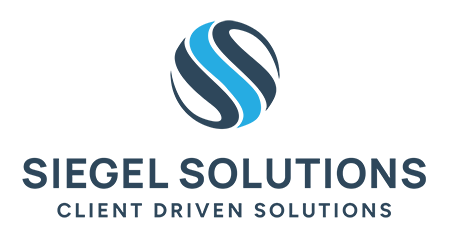
27 Sep Profit vs. Cash Flow: Why the Distinction Matters More Than You Think
As a business owner, you wear dozens of hats. Sales, Marketing, HR, Operations—and somewhere in the mix, you are expected to be the CFO too. When you look at your Profit & Loss (P&L) report and see a healthy bottom line, it can feel like a win. But then reality hits: your bank account is low, bills are due, and you are wondering, “Where did all the money go?” That is the classic clash between profit and cash flow. And the distinction between the two could be the difference between growth and failure.
Find out where your money really goes with a professional bookkeeping expert.
This article explains why understanding the distinction between profit and cash flow is crucial for the health and longevity of your business. It is not just about mastering accounting terms; it is about empowering yourself to make better, more informed decisions that affect your daily operations and long-term sustainability.
In our work advising small business owners, we see this issue come up repeatedly. Smart, driven entrepreneurs find themselves in tight spots because they confuse what the P&L shows with what is really happening in their bank account. We are here to help you break that cycle. By the end of this article, you will have a clearer understanding of the difference between profit and cash flow, how each impacts your business, and the practical steps you can take to manage both more effectively.
What Is Profit?
Profit is what remains after you subtract all your expenses from your revenue. It comes in three flavors:
- Gross Profit: Revenue minus cost of goods sold (COGS). This tells you how efficient your production or service delivery is.
- Operating Profit: Gross profit minus operating expenses. It reflects how well you are managing day-to-day costs.
- Net Profit (Net Income): What is left after all expenses, including taxes, interest, and depreciation. This is the number most people refer to when they talk about “the bottom line.”
Profit is what you see on your Income Statement (P&L). It is a measure of your business’s financial performance over a specific period. It helps determine whether your business model is fundamentally sound.
What Is Cash Flow?
Cash flow tracks the actual movement of money in and out of your business. It includes:
- Cash Inflows: Sales collected, loan proceeds, investment contributions, and any other sources of actual money coming into your business.
- Cash Outflows: Rent, payroll, vendor payments, loan repayments, and other obligations.
Unlike profit, which can include revenue you have earned but not yet received, cash flow reflects your real-time financial position. It answers the question: “Do I have enough money to pay my bills today?”
Your Cash Flow Statement breaks this into three parts:
- Operating activities: The core of your business—sales receipts, vendor payments, salaries.
- Investing activities: Buying equipment, vehicles, or property.
- Financing activities: Loans, credit lines, and owner distributions.
Understanding cash flow helps you stay liquid and flexible, enabling better decision-making in both the short and long term.
Why Confusion?
Many business owners think, “If I’m profitable, I must be doing well.” But profitability is an accounting concept, not a reflection of your business’s ability to operate day-to-day. You can be profitable on paper and still find yourself unable to make payroll.
This confusion often stems from:
- Accrual accounting: You record income when it is earned and expenses when incurred, not necessarily when cash changes hands.
- Timing differences: You may book revenue in one month and collect the cash much later.
- Non-cash items: Depreciation lowers your profit but does not affect your cash.
Understanding these differences helps you see past the surface of your financial statements and get to the real story your numbers are telling.
The Real-World Impact
Let’s say your P&L shows $50,000 in profit –but that does not mean you have $50,000 in the bank? Consider these scenarios:
- You invoiced a client for $30,000 but have not been paid yet. That is profit, not cash.
- You spent $20,000 on inventory that has not turned into sales.
- You made a $10,000 loan payment. The interest is on the P&L, but the principal is only on the Cash Flow statement.
So even with a “profitable” month, your cash position could be negative. This is how profitable companies can—and do—go under.
Consequences of this disconnect include:
- Missed payroll, which affects staff morale and trust.
- Late vendor payments, which can hurt relationships and terms.
- Bank overdrafts or bounced checks, damaging your reputation and incurring fees.
- Lack of capital to reinvest, stalling growth.
Cash Flow Is King for Survival
Profit may be the long-term goal, but cash flow is the lifeblood that keeps your business alive. Without it, you cannot pay rent, suppliers, or employees. You cannot invest in growth, cover emergencies, or even keep the lights on.
Cash flow becomes even more critical in industries with high seasonality, long sales cycles, or delayed payments. It is not enough to be profitable; you need to be liquid.
Healthy cash flow allows you to:
- Weather slow months without panic.
- Take advantage of growth opportunities.
- Sleep at night knowing you are covered.
Profit Is Still Important
Let us be clear: profit does matter. Over time, your business needs to generate more revenue than it spends. Otherwise, you are relying on loans or investments to survive, which is not sustainable.
Profit helps you:
- Evaluate pricing and cost efficiency.
- Attract investors or lenders.
- Reinvest in better systems, staff, or marketing.
But profit alone does not tell the whole story. Many profitable companies fail because they overlook the timing and flow of cash.
Think of profit as the destination, and cash flow as the fuel to get there. Both are essential.
How to Manage Both Effectively
Managing profit and cash flow simultaneously is not always easy, but it is essential. Here are some strategies:
- Know Your Break-Even Point: Calculate how much revenue you need each month to cover fixed and variable costs. This not only guides pricing decisions but also helps forecast when you will move into profitability.
- Create a Cash Flow Forecast: Look ahead for at least 13 weeks. Plot expected inflows and outflows. This rolling forecast helps you predict shortages and plan accordingly.
- Monitor Accounts Receivable: Past due payments from customers are one of the biggest cash flow killers. Set clear terms, follow up regularly, and consider tools like invoice factoring or payment platforms to speed up collection.
- Manage Inventory Wisely: Excess inventory ties up cash. Adopt just-in-time practices where possible and track inventory turnover rates to stay lean.
- Understand Loan Terms: Be aware of repayment schedules. Loan Principal does not show on your P&L but must be paid in real dollars. Schedule repayments into your cash flow forecast.
- Use the Right Reports: Each financial report offers different insights:
- P&L: Measures profitability.
- Balance Sheet: Shows assets, liabilities, and equity.
- Cash Flow Statement: Details of where your cash is going.
You need all three to make sound decisions.
Practical Example: Two Businesses, Same Profit, Different Cash
Let us say both Business A and Business B report $100,000 in profit for Q1:
- Business A has $80,000 tied up in unpaid invoices and unsold inventory. They are profitable but cannot meet their short-term obligations. They are delaying vendor payments and losing sleep.
- Business B collects quickly and manages inventory tightly. They have a strong positive cash flow. They can invest in growth, pay bonuses, and negotiate better terms with suppliers.
Same profit. Quite different realities.
Collaborating with Advisors
If you are not regularly reviewing your cash flow, you are flying blind. A strong partnership with your bookkeeper, accountant, or financial advisor can be a game changer.
Advisors can help you:
- Set up useful dashboards and reports.
- Interpret financial trends.
- Anticipate cash crunches and plan accordingly.
- Create strategies for both profitability and liquidity.
Do not just meet once a year, make this a monthly rhythm. You will gain peace of mind and make more confident decisions.
Think in Cash Terms
Understanding the distinction between profit and cash flow is not simply about improving your financial literacy—it is about equipping yourself to run your business more effectively. While profit measures your success over time, cash flow determines your ability to operate on a daily basis.
By viewing your financials through both lenses, you can identify challenges early, make better strategic decisions, and avoid common pitfalls that lead to unnecessary financial strain. Profit may guide your long-term planning, but cash flow is what ensures you can execute that plan.
Business owners who prioritize cash flow alongside profit are more agile, resilient, and better positioned to seize growth opportunities when they arise. As you review your numbers, ask not only, “Am I profitable?” but also, “Am I solvent?”
In short, always remember profitability supports sustainability, but cash flow ensures survival. Successful businesses manage both with equal care and attention.
If you’re unsure how to align profit with cash flow in your business, now is the time to consult with a trusted advisor like Siegel Solutions! The clarity you gain will be one of the most powerful tools in your toolkit. Feel free to reach out anytime!

























